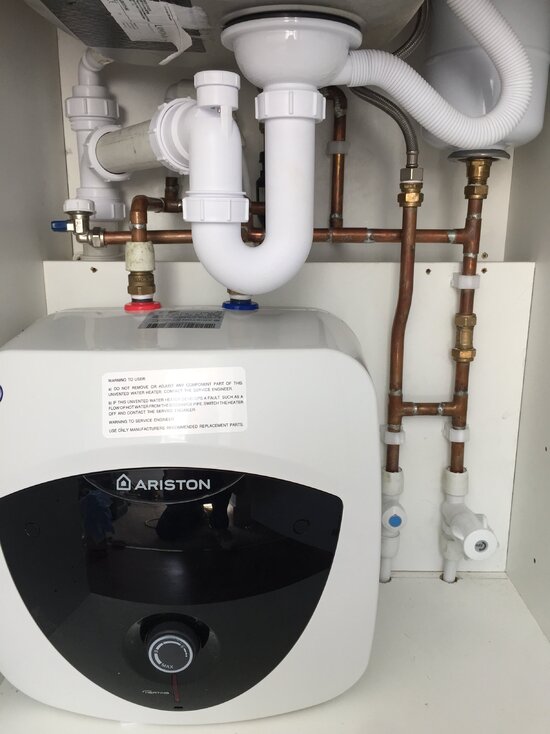I've had my work assessed which has raised a question about Extraneous-conductive-part. I just want to be sure I fully understand this.
BS7671 Part 2 defines it as; A conductive part liable to introduce a potential, generally Earthed potential, and not forming part of the electrical installation.
e.g. A conductive part; liable to introduce potential; and not forming part of the electrical installation.
The installation is a studio flat. There is no gas, the mains water is supplied from the road in plastic throughout. The stop cock is plastic. On from this is plastic pipework terminated under the sink. Under the sink is a 3KW water heater and some copper pipework. The pipework leaving the sink cupboard is plastic. Therefore the full extent of copper pipework is under the sink.
It is a new installation protected by RCD. It is not a special location (7)
I do not require "Supplementary equipotential bonding" as it is not Part 7 and ADS is satisfactory.
My question(s) are;
Am I correct in identifying this as an Extraneous-conductive-part ?
Guidance Note 8 advises if the measured resistance between the Extraneous-conductive-part and MET is greater than 6.67k ohms it need not be considered Extraneous-conductive-part. I'm gonna take this measurement tomorrow, assuming it is higher can I conclude I do not need to bond?
However, contrary to this;
Guidance Note 8 states; It is important to note that protective equipotential bonding is always required where the protective measure is ADS.
Guidance Note 8 shows Extraneous-conductive-part with main Protective equipotential bonding.
So having gone around the houses I conclude I have to bond the Extraneous-conductive-parts with 10mm.
So trying to make sense of this, if Extraneous-conductive-part is close to electrical installation and could become live, bond it. If its in middle of field take reading and only bond if below 6.67k ohms?
Is my summary correct, if not please correct me.........
BS7671 Part 2 defines it as; A conductive part liable to introduce a potential, generally Earthed potential, and not forming part of the electrical installation.
e.g. A conductive part; liable to introduce potential; and not forming part of the electrical installation.
The installation is a studio flat. There is no gas, the mains water is supplied from the road in plastic throughout. The stop cock is plastic. On from this is plastic pipework terminated under the sink. Under the sink is a 3KW water heater and some copper pipework. The pipework leaving the sink cupboard is plastic. Therefore the full extent of copper pipework is under the sink.
It is a new installation protected by RCD. It is not a special location (7)
I do not require "Supplementary equipotential bonding" as it is not Part 7 and ADS is satisfactory.
My question(s) are;
Am I correct in identifying this as an Extraneous-conductive-part ?
Guidance Note 8 advises if the measured resistance between the Extraneous-conductive-part and MET is greater than 6.67k ohms it need not be considered Extraneous-conductive-part. I'm gonna take this measurement tomorrow, assuming it is higher can I conclude I do not need to bond?
However, contrary to this;
Guidance Note 8 states; It is important to note that protective equipotential bonding is always required where the protective measure is ADS.
Guidance Note 8 shows Extraneous-conductive-part with main Protective equipotential bonding.
So having gone around the houses I conclude I have to bond the Extraneous-conductive-parts with 10mm.
So trying to make sense of this, if Extraneous-conductive-part is close to electrical installation and could become live, bond it. If its in middle of field take reading and only bond if below 6.67k ohms?
Is my summary correct, if not please correct me.........










